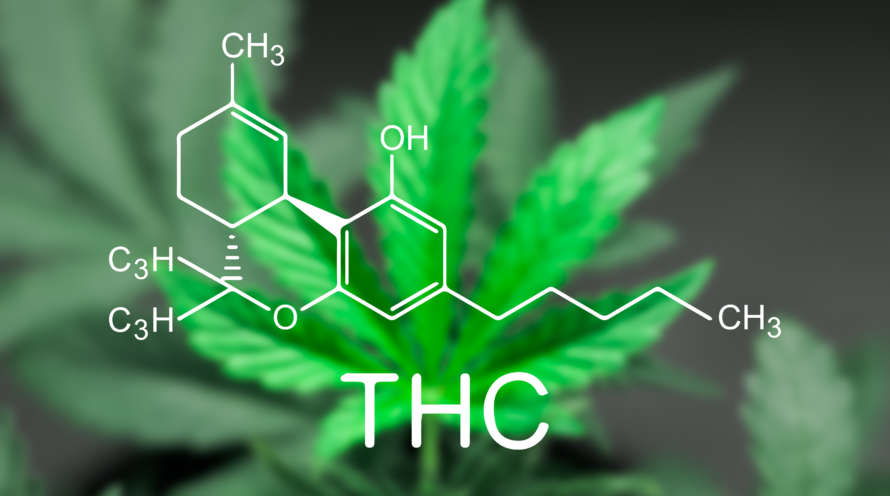What is Addiction?
To understand whether marijuana is physically addictive, one must first define addiction. Physical addiction occurs when “the body adapts to the presence of a drug so that drug no longer has the same effect (when ingested), otherwise known as a tolerance.” Once the drug is removed from the body, the body goes into withdrawal, experiencing physical discomfort and other symptoms such as nausea, diarrhea, vomiting, shakes, tremors, and more. Comparatively, psychological addiction or dependence is defined as “a perceived need.” Someone with a psychological dependence on a substance may believe that, for example, they need the substance in order to fall asleep. However, without using the substance, a person with a psychological addiction can and will eventually fall asleep without experiencing the symptoms of physical withdrawal.
While many people have long understood there to be a difference between physical and psychological addiction, many experts now believe that distinction to be arbitrary and outdated. According to the 2010 director of the National Institute on Drug Abuse “psychological addiction occurs in your brain and it’s a physical change” and while “different brain processes may be involved in the psychological drive to take drugs and in the physical withdrawal symptoms when the drug is stopped —… both are brain changes.”
Applying the Definition of Addiction to Marijuana
According to the above understandings of addiction generally and physical addiction specifically: yes, marijuana can be addictive and users can experience physical withdrawal symptoms when they stop using the drug. Physical withdrawal symptoms from marijuana are mild however, and may include difficulty sleeping, irritability, and decreased appetite. As one Columbia University clinical neuroscience professor described physical withdrawal from marijuana, “it looks like nicotine withdrawal.”
Although marijuana does have the potential to be physically addictive, it is both less addictive and less harmful than some completely legal substances, such as alcohol or tobacco. Up to 15 percent of people who use alcohol become addicted to alcohol, and between 20 and 30 percent of people who try tobacco become hooked on tobacco. Comparatively, only 9 to 10 percent of marijuana users become addicted to it the substance. (And even then, addition is primarily what researchers have called “psychological.”)
Because people are less likely to become addicted to marijuana than they are to other substances and because withdrawal symptoms from it are mild, only a small percentage of people in drug recovery programs report that marijuana is their primary drug. While over 56 percent of Americans have tried marijuana by age 20, only 16 percent of people in drug treatment list marijuana as the primary substance that they use. To compare with a highly addictive substance, only 2 percent of young Americans have used heroin, while nearly 15 percent of people in drug treatment facilities list heroin as the primary substance that they use.
In addition to being it less likely for people to become addicted to marijuana than it is for them to become addicted to substances like alcohol and tobacco, addiction to marijuana and withdrawal from it is also less harmful and dangerous than addiction and withdrawal from alcohol or addiction to tobacco. Although withdrawals from marijuana use can be irritating and challenging to overcome, withdrawals from alcohol use can be fatal. Symptoms from alcohol withdrawal can include irregular heart rate, confusion, hallucination, and seizures. Many heavy alcohol users who are dependent on the completely legal drug must be hospitalized, and need medical intervention, in order to detox from it safely.
Marijuana vs. Tobacco
While tobacco withdrawals are similar to marijuana withdrawals, tobacco addiction itself presents much greater health risks than marijuana addiction. Tobacco use is linked to many forms of cancer, including lung, throat, larynx, liver, and kidney cancers. On the other hand, marijuana is a non-toxic substance that has healing and inflammatory effects on many conditions. Health risks of marijuana use lie largely in the potential inhalation of combustible byproducts for users who smoke marijuana instead of taking it by some other delivery method, like ingesting or vaporizing it, which may be safer methods of consumption. Typically, marijuana use involves inhaling fewer of those byproducts than tobacco use, simply because most users inhale a smaller volume of smoke during the course of use.
Whether you believe marijuana is “addictive” may depend on how you define addiction. Different researches have reached different conclusions. To us, the current consensus seems to hold that marijuana can be psychologically addictive, if not physically addictive. Either way, our takeaway is the same: as with alcohol or tobacco, marijuana should be used responsibly and in moderation.
Please don’t take anything you read here as medical or legal advice. If you need medical or legal advice, consult a doctor or lawyer. The articles and content that appear on this website have been written by different people and do not necessarily reflect the views of our organization.


